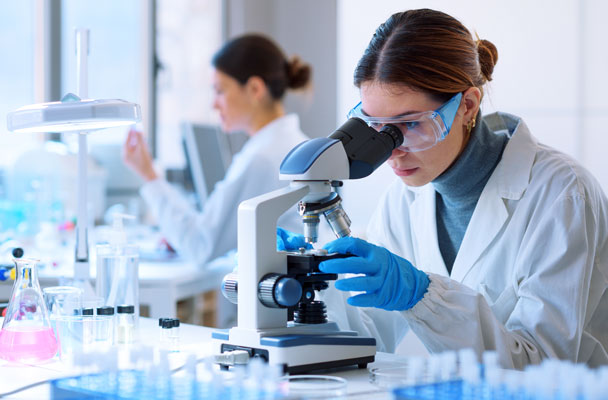Scientific progress often moves slowly, but for good reason. It takes time to develop effective treatments through clinical trials. However, researchers also face limits in time, resources, and the ability to process big data. Valuable insights can be hiding behind that complex information.
Using an AI platform for life sciences could be the change laboratories need. It can recognize patterns in data that most humans can see and turn them into workable ideas.
The practical results derived from AI solutions benefit many aspects, including medical treatments, agricultural practices, and environmental conservation. Here’s how an AI platform for life sciences impacts patient care and the real world.
Transforms Drug Discovery and Development
Traditional drug discovery relied on chance and repetition. While this method works sometimes, it involves a lot of time. Scientists would test thousands of compounds before finding one even worth taking to the next stage.
With an AI platform, labs can predict which molecules hold the most potential. In minutes, it can study protein structures, chemical interactions, and genetic variations. This tool helps cut research time and reduce financial risk and human error. Pharmaceutical companies can now begin trials with data-backed confidence instead of intuition.
Trusted AI solutions for life sciences research have features that streamline workflows, reduce costs, and accelerate timelines. Despite their speed, these tools don’t compromise clinical outcomes; instead, they can improve them. AI platforms ensure efficiency and timely regulatory compliance through the enhancements they provide.
Personalizes Medicine at Population Scale
Personalized medicine is becoming more common thanks to medically-tuned AI tools for life sciences. These can create individualized treatment plans targeting the disease’s root cause using data-driven genomic and clinical information.
An AI platform does this by building a digital ‘twin’ of a patient in the study. It simulates how that person’s body might respond to different therapies before giving a prescription. That model helps physicians choose safer, more effective treatment paths that improve patient outcomes.
At a larger scale, these platforms analyze trends across thousands of patient records. They detect early warning signs and track how certain genes react to drugs. Additionally, they suggest preventive care strategies for communities.
It’s crucial to personalize medicine because treatments and therapies don’t always work for everyone. Experts say personalized medicine has helped make cancer treatment, for instance, more effective. It may have even lent a hand in declining mortality rates. (1)
Revolutionizes Laboratory Efficiency and Collaboration

Back in the day, laboratories worked in isolated units. Researchers had to manage with scattered equipment and disconnected databases. With an AI platform for life sciences, those systems become unified into a single environment. Now, clinical planning, testing, and analysis can happen with fewer interruptions.
A good platform allows researchers to schedule analyses and read experimental results in real time. It frees data scientists and researchers to focus on creative problem-solving. As a result, many labs now finish weeks of work in a few days.
These platforms also predict maintenance needs and manage resources more efficiently. Tracking reagent levels and instrument performance minimizes waste and downtime.
Cloud integration allows global teams to share results instantly while protecting sensitive data management systems. These connected environments also enhance medical education, allowing students and trainees to learn from real datasets and simulated research scenarios.
AI in Environmental and Agricultural Biotechnology
AI’s reach in life sciences isn’t limited to medicine. Environmental and agricultural research gain equal momentum. Scientists use AI models to monitor soil health, track pollution effects, and identify resilient plant or microbial species.
An AI platform for life sciences can merge data from genetics, climate records, and soil composition to predict how crops adapt to changing conditions. This information helps design plants that withstand heat, pests, and drought without harmful chemicals.
In environmental biotechnology, AI models identify microbes capable of cleaning contaminated areas. These discoveries guide efforts to restore ecosystems and maintain biodiversity. Agriculture and ecology now share a digital foundation connecting molecular detail to global sustainability.
Bridging Research and Clinical Reality
The journey from laboratory result to clinical application often takes years. On average, it takes 7.3 years to develop new drugs, from first-in-human study initiation to obtaining marketing authorization. AI shortens that distance by transforming research data into direct medical insight. Algorithms compare experimental outcomes with patient data and reveal patterns invisible to human review. (2)
An AI platform for life sciences identifies reliable biomarkers for clinical trials, allowing scientists to test fewer subjects while gathering more accurate data. Hospitals can also use these insights to adjust ongoing treatments and improve patient care.
Regulatory bodies are beginning to adopt AI tools for data verification and model transparency. Faster approvals align with strict safety standards, showing how AI can enhance integrity instead of replacing it. Clinical environments start to resemble living laboratories where discovery and care occur side by side, powered by advanced machine learning models.
Ethical Design and Human Oversight
Artificial intelligence as a tool must earn a reputation in biotechnology. As such, research continues to address its impact, potential ethical issues, and social impacts. Professionals still need to be trained in AI. Scientists still guide its decisions, ensuring transparency and accountability in every result. (3)
Modern AI-powered platforms include built-in audit trails that record how each conclusion was formed. Researchers can trace data lineage, identify errors, and correct models without losing progress. Their oversight guarantees that AI remains a partner in reasoning, not a replacement for it.
Ethical frameworks now shape the next phase of biological AI. They promote fairness, prevent bias, and encourage open review across disciplines. The goal isn’t just automation but a deeper understanding built on responsible technology.
Wrapping Up
An AI platform for life sciences has turned analysis into action. Its influence extends from the first laboratory test to the moment a patient, animal, or plant benefits from that knowledge.
As biology and computation merge, scientific progress feels like a system that learns, refines, and responds. AI tools help guide that evolution, where research moves as quickly as imagination.
References
1. “Making medicine personal: Moving away from a one-size-fits-all approach to health care,” Source: https://www.aamc.org/news/making-medicine-personal-moving-away-one-size-fits-all-approach-health-care
2. “How long does it take to develop a new drug?” Source: https://www.thelancet.com/journals/lanepe/article/PIIS2666-7762(24)00165-0/fulltext
3. “Potential Impacts of Artificial Intelligence (AI) in Biotechnology,” Source: https://www.mdpi.com/2076-3417/14/24/11801











